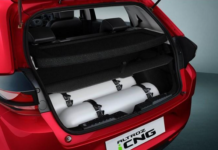Does your car make strange noises while stalling or overheat quickly on a summer’s day? If so, it’s time to take a look at your car’s coolant levels. Don’t take this lightly, because it can damage your engine and stop it from working.
For one, your engine needs coolant to run smoothly at its best. If the coolant levels in your car are constantly low, it causes engine damage and major overheating problems. This can blow out the gasket of your car and, make the sensors in your car default.
Additionally, the AC system in your car also stops working with low coolant levels. It’s important to maintain and refill your coolant at the right time – to prevent future car damage.
Read Also: Car Stereos: 7 Tips for Choosing the Best Head Unit
Are you worried that your car may be low on coolant? Don’t worry – it’s easy to recognize the symptoms. This article is here to help you do just that!
Read on for the signs, symptoms, and solutions for knowing when your car needs more coolant.
What is low coolant?
Low coolant means there isn’t enough coolant in your car’s radiator. You need to maintain optimal levels of coolant to prevent your engine from overheating. When the coolant level stays low for a long time, it damages your engine.
Low coolant levels are usually caused by evaporation, fuel surge, or leaks. Make sure you check the coolant levels of your car regularly and keep them topped up or refilled as per requirements.
The TOP 3 symptoms of low coolant in cars
When your car is low on coolant, there are a few symptoms that pop up. One of the most common symptoms is fluctuations in the gauge level in your car.
Other typical symptoms include your engine overheating, the check engine light switching on, or bad smells and smoke coming from your car hood.
The top 3 symptoms of low coolant in cars are
- Warning Light: When the coolant levels in your car are low, you’ll get a warning light from your car. Topping up your engine is important. Moreover, as the weather gets hotter or colder – your coolant level needs to be maintained to protect your engine.
- High Temperature: The optimal temperature that your car needs to maintain is between 195 to 220 Fahrenheit. Pay attention to the gauge on your car’s dashboard.
If you see it moving toward the hotter side, it’s a serious issue.
If you happen to be driving, you might hear odd engine noises. In that case, pull over immediately and, turn your engine off. Don’t open your hood until your engine has cooled off properly – or you risk hurting yourself.
- Radiator Issues: When you don’t maintain your radiator for a long time, dirt collects on top of it and, makes it harder for them to cool your engine optimally. The best thing to do is to get your radiator inspected and identify the problem soon.
Replacing your radiator is required if you see rust or corrosion on it. On the other hand, dirt can be easily removed by water. But, if your engine still has issues, it’s best to take it to a qualified mechanic for inspection.
Fixing issues soon help your car survive longer.
Common Causes of Low Coolant Levels
As your engine keeps burning fuel, it uses coolant to keep your car running smoothly. However, there are some other common causes of low coolant levels, which are:
Evaporation: Your coolant system needs to be sealed properly. If it isn’t, it causes coolant loss. Another reason for low coolant is driving a lot in the summer.
Leakage: Leaks can occur anywhere from the radiator to hoses and even the engine itself. It’s important to check these areas of your car for any leakage situations.
Drainage: When filling your car system with new coolant, It’s important to replace or drain out the old coolant first. Any remaining coolant will drain out from your car. So, it’s important to fill your reservoir properly when getting a coolant change.
Solutions For Low Coolant Levels in Cars
The top solutions to follow if you have low coolant levels in your car are
- Add More Coolant: Filling your coolant system and maintaining it helps your engine greatly. Sometimes a quick fix for low coolant levels is to simply refill it. You can easily get your hands on a top coolant for your car – as required.
- Check For Leaks: Did you notice any leaks in your car? It’s important to get them fixed soon. You may need to change your engine houses that carry the coolant to it. Pay attention to other parts of your car too. Replace them if too damaged or old.
- Radiator Flush: If your radiator is too dirty or clogged, it’s useful to get it flushed and, filled with brand-new coolant. Don’t do this yourself if you’re not a qualified mechanic, because the coolant system needs to be opened and checked for issues.
Important Tips
- Regularly check on your coolant levels and refill them as needed.
- Pick your coolant according to the needs of your vehicle.
- Inspect your car systems often, especially your radiator. Replace them if necessary.
- Get your cooling system flushed if there’s too much debris, or it’s been lagging.
- Consult a qualified mechanic to identify and fix car issues that are too dangerous.
Conclusion
Coolant is responsible for the good health of your car. Being aware of the low coolant symptoms in your car, helps you recognize the problem easily. This allows you to take care of your car – before gets any major issues.
Moreover, maintaining and topping up the coolant level of your car regularly is important. Your engine will run smoothly for a long time if you follow all the steps mentioned above. However, are times when your engine is overworked or, damaged due to overheating. For more information about car and radiator repair be sure to check out Natrad.
Find the perfect car engine today! Check the largest U.S. inventory of used engines and transmissions and get back on the road in no time. 100% ASE certified & tested engines- warranty available on every system you buy. Contact now: 1800-518-9776










